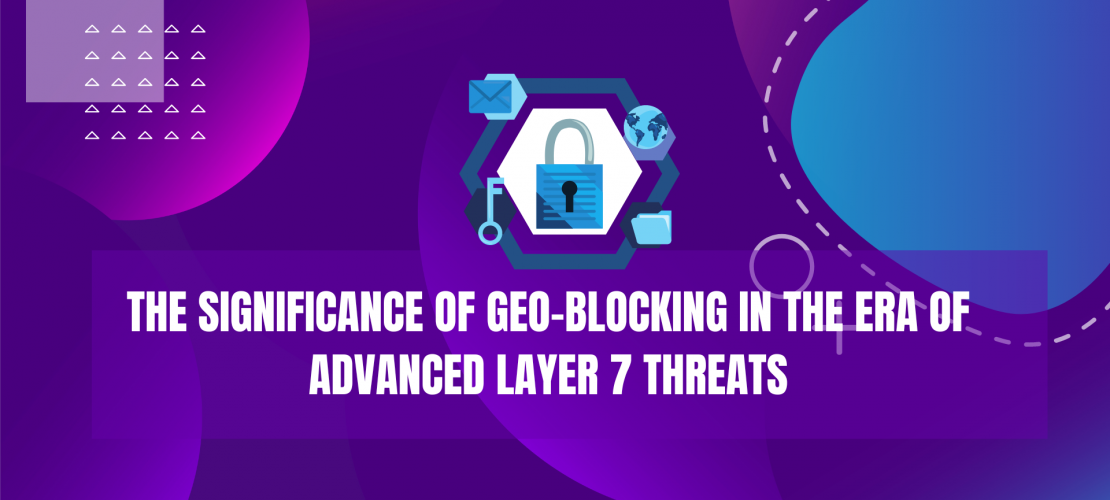In the rapidly evolving landscape of cybersecurity, threats are not just becoming more frequent but also growing in complexity. Among these advanced threats, Layer 7 attacks have emerged as a significant concern for organizations worldwide. As cybersecurity experts work diligently to combat these threats, one strategy that has gained importance is Geo-Blocking. This blog post aims to illustrate the significance of Geo-Blocking in the era of advanced Layer 7 threats.
Demystifying Layer 7 Threats
To begin with, we need to understand Layer 7 threats. In simple terms, these are cyber-attacks targeting the highest level in the OSI (Open Systems Interconnection) model – the Application Layer. This layer is where users interact with applications and services, making it a ripe target for cybercriminals. The threats include DDoS attacks, SQL injection, and Cross-Site Scripting (XSS), among others, that aim to exploit vulnerabilities in web applications.
Understanding Geo-Blocking
In the broad spectrum of cybersecurity measures, Geo-Blocking stands out as a compelling strategy. Geo-Blocking is essentially a method of preventing access to web content based on a user’s geographical location. It’s like an internet boundary that filters traffic based on geographic origins. This method can be instrumental in blocking unwanted traffic from specific regions known for cybercrime, thereby mitigating potential threats.
Geo-Blocking and Layer 7 Threat Mitigation
Now, how does Geo-Blocking come into play with Layer 7 threats? Let’s delve into it.
- Preventing Access from High-Risk Regions: Geo-Blocking is an effective way of reducing the attack surface for Layer 7 threats. By preventing access from regions known to harbor cybercriminals, organizations can decrease the chances of a successful attack significantly.
- Reducing Traffic Overload: Layer 7 attacks, like DDoS, often overwhelm services by sending massive amounts of fake requests, which can be effectively mitigated by Geo-Blocking. By blocking traffic from specific geographic locations, the load on the servers can be significantly reduced, preventing service disruptions.
- Protecting Data Privacy: Geo-Blocking can also be crucial in protecting data privacy, a concern closely linked to Layer 7 threats. By blocking access to sensitive data from unauthorized geographical locations, organizations can prevent data breaches.
- Regulatory Compliance: In certain industries, companies are required to restrict access to their digital resources based on geographical boundaries due to regulatory requirements. Geo-Blocking can assist in ensuring such compliance, thereby avoiding potential penalties.
A Balanced Approach to Geo-Blocking
While Geo-Blocking serves as a potent tool in the fight against Layer 7 threats, it’s crucial to strike a balance. Overly restrictive Geo-Blocking policies may limit legitimate users from accessing online services, potentially causing a negative user experience and a loss of business opportunities. Therefore, organizations must implement Geo-Blocking thoughtfully and in conjunction with other cybersecurity measures, like firewalls, intrusion detection systems, and regular security audits.
In conclusion, Geo-Blocking plays a significant role in mitigating advanced Layer 7 threats. By controlling access based on geographic origins, organizations can reduce the risk of cyber-attacks, ensure data privacy, and maintain regulatory compliance. However, it is imperative that Geo-Blocking should be one part of a comprehensive cybersecurity strategy, ensuring robust defense against an increasingly complex threat landscape.




